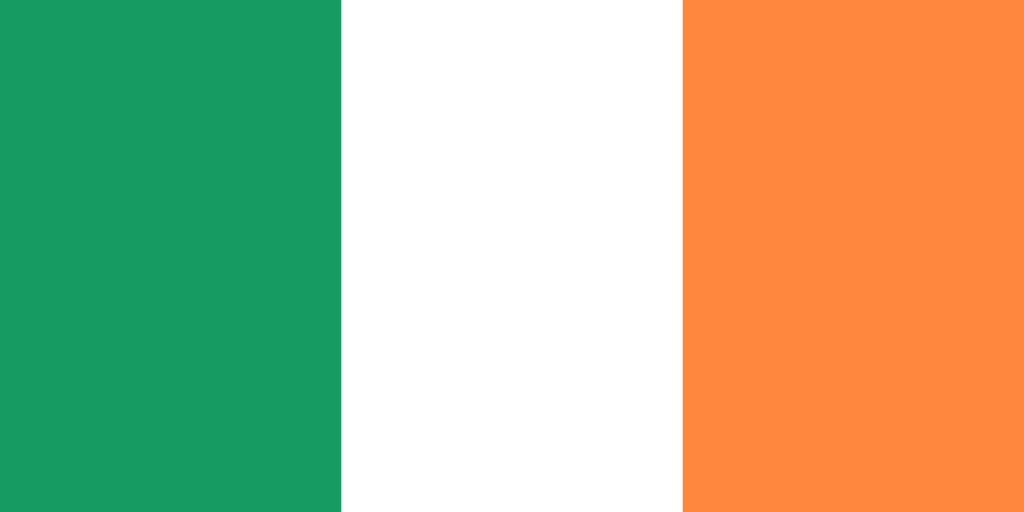Election of the day: Ireland

Several years ago, sometime in the oughts, at a conference I was discussing Irish politics with a professional colleague who’d moved there for a job 10 years prior, and had just completed or was in the midst of completing the naturalization process. I’ve often found Irish politics a bit inscrutable, and the conversation didn’t render them any less so. He memorably subsidized the general landscape as “the parties are often indistinguishable on policy, and who people vote for appears to be largely determined by who their grandfather voted for.” Alas, the contours of this election are somewhat less charmingly inscrutable than the political landscape described to roughly a decade ago.
Alas, this contours of this election appear to be considerably more scrutable than the discussion above would suggest. Sinn Fein, the left-most of Ireland’s three major parties, appeared for much of 2023 and 2024 to be favored to return to power in this election, but since late Spring the tide has shifted and they are now running in 3rd place, behind the other two major parties, Fianna Fail and Fine Gael. (If anyone familiar with Irish politics who feels they can explain the substantive differences between these parties is inclined to chime in in the comments section and enlighten me/us, I’d be grateful.) The most recent polling averages has those two parties tied at 21, with Sinn Fein at 20. Of course how this translates into seats is unclear, especially as seat distribution will be determined to no small degree by voter’s second and third choices. The two center-right pro-European parties are currently in a coalition government, and have both indicated a disinterest in governing with Sinn Fein, so simply narrowly coming first is unlikely to get them into government.
As for the Irish electoral system, I thank Paul and valued commenter MacK for explaining it better than I would. Why has Sinn Fein lost ground in the polls? The answer may seem depressingly familiar:
Central to the challenges Sinn Féin faces is the tension between the political forces within the party, McElroy said.
Unlike many nationalist parties in the rest of the EU – such as the far-right Alternative für Deutschland in Germany and the National Rally in France – socialist ideology is at Sinn Féin’s core.
“Migration is a really difficult issue for them. Sinn Féin are unusual in that they are a leftwing nationalist party,” she said.
“Typically, nationalist parties tend to be on the right and nativist … happy to redistribute money but only to people of a given nationality. Sinn Féin, on the other hand, have quite a socialist economic agenda, which is at odds with that. They are also reasonably liberal in the republic which creates a tension in the party,” she added.
Those tensions have been particularly exposed this year with a significant rise in the number of people coming to Ireland from the Middle East and elsewhere, requesting asylum. An estimated 16,000 people have lodged such claims this year, compared with approximately 9,000 in 2023.
Small far-right parties have so far failed to make a political breakthrough but are more noticeable than ever. Several independent candidates are running on anti-immigration tickets in next week’s election.
“You have all these independents who can espouse whatever views are popular on the ground in areas where there are asylum seekers or hostels are going to be established. Sinn Féin have had to lean to the right on this,” adds McElroy.
This stands a very good chance of being the first incumbent victory in a wealthy democracy in 2024, but Fine Gael leader and current Taoiseach (Irish for Prime Minister) Simon Harris isn’t exactly closing strong:
The two centrist parties that have governed Ireland in a coalition since 2020, Fine Gael and Fianna Fáil, appeared to be on cruise control to lock up enough votes to stay in power.
But now, just days before voters cast their ballots on Friday, Ireland’s election has suddenly gotten more interesting. An uncharacteristic misstep by the popular prime minister, Simon Harris, and a bounce back in the polls by the main opposition party, Sinn Fein, has churned the waters.
Mr. Harris, a 38-year-old career politician who has been an energetic leader of Fine Gael, is under intense pressure after a brusque exchange with a voter was caught on camera and went viral on social media. The episode, analysts said, could cost Mr. Harris his job as Taoiseach, or prime minister.
When the votes are counted, political analysts say, the most likely outcome is still a unity coalition of Fianna Fáil and Fine Gael, perhaps augmented by the left-wing Greens or Labour Party, which would enable Ireland’s big parties to cobble together another majority in Ireland’s parliament.
But Fine Gael’s poll numbers were sinking even before Mr. Harris was stopped last Friday evening in a supermarket north of Cork by Charlotte Fallon, who protested that his government was not doing enough to support those, like her, who work with disabled people. Tight-lipped and tense, Mr. Harris denied Ms. Fallon’s claims, offered her a curt handshake, and turned away.
“Keep shaking hands and pretend you’re a good man,” a visibly distressed Ms. Fallon said. “You’re not a good man.”
Mr. Harris apologized profusely later, posting on his Instagram account: “I didn’t give her the time that I should have given her, and I feel really bad about that.” He phoned Ms. Fallon to say sorry directly, which did not seem to mollify her. “I hope nobody else has to have an interaction like that ever, because it’s not very nice going home crying,” she told The Irish Times.
Voting takes place on Friday; the complexities of the Irish electoral system mean we may not know right away the results of the election.


